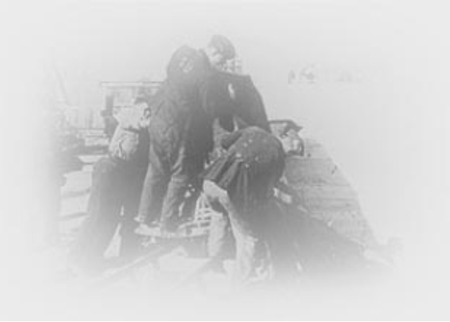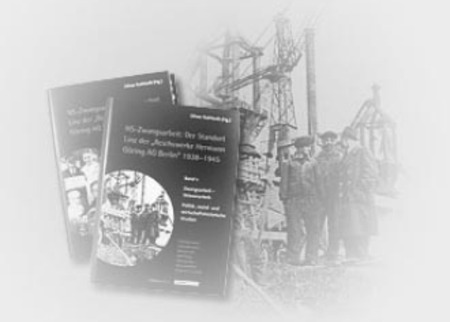International discussion on the subject of compensation for forced labor under the Nazis began after the first of a series of collective law suits filed by lawyers in the USA. Top management at the Austrian VA Steel was determined from the start not to ignore this issue and at the end of 1998 their response was to commission a group of academics including historians (Christian Gonsa, Gabriella Hauch, Michael John, Bertrand Perz and team leader Oliver Rathkolb), economists (Josef Moser) and psychologists (Karl Fallend) to conduct the research project ‘Nazi Forced Labor in Linz under the “Reichswerke Hermann Göring AG Berlin” 1938-1945’. The objective was to achieve comprehensive clarity about the background circumstances and the effects of this dark episode in history.
When the project began the total numbers of foreign workers employed between 1938/39, of forced laborers from 1940/41 and later of slave workers (these being forced workers from concentration camps) and their nationalities – quite apart from information about those who were still alive – were still entirely open questions.
The intention was to find answers to these questions and to examine all available sources, leaving no stone unturned while providing an analysis of the tangible living and working conditions experienced by these people, and this without permitting individual destinies to simply vanish in the anonymity of objective history writing.
The starting point for this independently conducted two year study was the biggest post-war find of some 38,000 staff and wage records from the Linz branch of the “Reichswerke Hermann Göring AG Berlin” (Hermann-Göring-Werke, Eisenwerke Oberdonau GmbH, contracting companies of Eisenwerke Oberdonau and Stahlbau GmbH) for the years 1938/39-1945. These records include forced laborers and Austrian and German workers. In 2001 the results of this research project were published in book form.
History names a lot of people. The detected staff and wage records made it possible to register the forced laborer in a database.
The book
The fate of over 20,000 civilian foreign workers is now examined comprehensively and for the first time on the basis of the biggest ever find of Nazi war industry staff and wage records. The find in the hochbunker (literally, "high(-rise) bunker") dating from the Second World War provides information on the fate of workers from abroad in the giant steel and armaments industry the Nazis built up almost overnight. The information is documented in an empirically comprehensive form and precisely analysed with a focus on Nazi economic policy, a comprehensive reconstruction of living and working conditions, a description of the repressive system behind it with particular reference to the situation of women, the situation of extremely brutal exploitation to which 7000 concentration camp victims from the near-by Mauthausen Camp were subjected, the economic significance of forced labor and a case study about men and women forced labor from Greece.
Published in 2 volumes totalling 988 pages. Limited edition containing previously unpublished photographic material:

